Sales Enablement, Tops the C Suite’s List of Must-Dos.

As per a recent Forbes Insights New Report with Brainshark, “The Power of Enablement: Bridging the Sales Productivity Gap,” that studied 200 plus US base executives, what topped the charts of priority for the C-level executives, was ‘How to improve sales productivity’ and how ‘Sales Enablement’ was important to productivity. They believe that sales productivity is critical to future growth and are willing to put their money where their belief is, as it has obviously been paying them rich dividends. Sales enablement solutions, as we see, are the top technology solutions they plan to invest in. Scaling up in numbers and the quality of selling across the chain becomes important as organizations grow. As the sales in organization grow, it is not just enough to focus on each sales representative, each account, and even each Key Account manually or through traditional methods and tools. Sales enablement in this situation plays a critical role. As Brainshark CEO, Joe Gustafson says, “You have to tackle sales productivity from two angles: improving efficiency and improving effectiveness.” This happens with Sales Enablement. It’s helpful to go through what this Report reveals. It reveals certain interesting findings of Sales Enablement and top-performing organizations. CEOs look at Sales Enablement Technologies to leverage their content. The two things important to CEOs are Sales Content Analytics and giving the sales representatives easy and instant access to content in the field. With Sales Enablement, organizations can make sure that their sales team always has information and resources at their fingertips. It is like a Content ATM- but accessible across devices. Integration with the organization’s CRM further improves content disbursal at the right time to the right people and in every selling situation. Moreover, it provides the right training for every such situation as well. With Content Analytics, you can measure the impact of content through revenue analysis, white space opportunity analysis and also help in identifying best sales practices. Content plays an important role in Sales Enablement for top-performing organizations. Consistent sales messages: All leading sales organizations provide consistent sales messages throughout the buyer’s journey. Sales enablement helps to scale up in communication and messages; this is how consistency in sales messages is made possible. Value and consistency separate top salespeople from the rest: Selling value over price is made possible with the help of sales enablement solutions, so is the consistency of the salespeople in impactful delivery. Continuous sales coaching and mentoring: Sales managers consistently coach and mentor their sales representatives. This would not have been possible without sales enablement as a key enabler. Performing companies value and harmonize sales and marketing: The Report says that 3/4ths of the top-performing organizations follow a good syncing of its sales and marketing functions. This helps in better utilizing the joint prowess in identifying leads and closing deals. There are multiple takeaways from this Report that a CSO can use. Trust you have already picked those up and are following those.
Social Selling -The Route for Building Sales Effectiveness
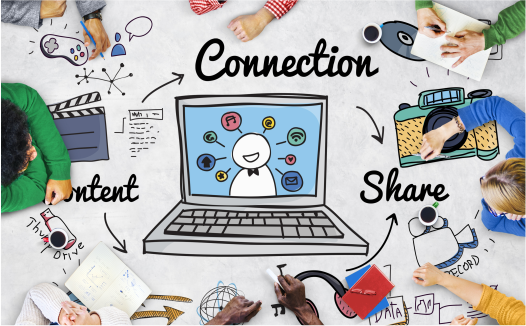
Inherent in the term ‘Social Selling’ is relationship building, lead nurturing, lead farming. The way these are termed may differ as per different individuals, but they mean one and the same thing. Using and leveraging social media platforms to identify prospects, connect with them, engage with them in conversations and then build a relationship mapping with them before taking it offline as well. Social media has totally revolutionized the way we sell – yes, even in the more complex B2B industry. It has changed the dynamics of demand and supply in a way that has not been imagined before. In this whole new yet not-so-new world, ‘Who Blinks First’ has also changed – it could be the buyer who hunts the seller or vice versa. A lot indeed can happen over Social Media! You can also use the best SMM panel for more efficient and streamlined social media management. Let’s do a quick sprint on how the Social Media Selling Process works and what one needs to do, to be good at it. Identify the right Social Media Platforms for your product. One quick way of picking the right platforms is to find out – Where is your customer present, online? What are his favorite haunts online when he is wearing his professional hat? It is also important to be aware of his favorite haunts beyond his 9 to 5 garb. Once you know this, you will be able to pick the top 3 social media channels/platforms he frequents. That’s where you connect with him. For instance, for a majority of B2B companies, a professional platform works better – such as LinkedIn. Work on your profile on that platform. Build a good profile. A profile on any Social Media platform needs a lot of working upon. Your profile is the face you show to the public. So while you need to be careful you are not shouting from the rooftops about your accomplishments, you must note all your accomplishments accurately. Being honest and transparent while working on your profile, has its own merits. Do not forget to have a nice formal, professional photograph uploaded. Research your prospects Do some research on the people you would like to connect with. See their profiles, take your time researching, be professional, yet creative and original when you send out that request for a connect. Among the millions on that platform, you need to give him a strong reason to want to accept your request to connect. Keep your connections engaged Keep your connections engaged in conversations. Be regular in updates – this helps your contacts stay updated with the happenings in your company and life Listen, acknowledge and applaud. Do all of these, as the case may be. Do read your contact’s updates. Comment on those acknowledges his accomplishments as you read about them, share an article that may be of interest to him and applaud when the situation demands. These things help you stay visible in his mind and ensure recall at a later stage when you may need it. This also sets the stage for your prospect to develop a ‘liking’ towards you – the first building block of trust and a long-term relationship Take it offline, too. When you have developed a fair engagement mutually, seek a meeting or a phone call with him. This is when you move your purely online relationship to offline. Keep it going. From here onwards, keep up the engagement online and offline. Social Media Selling has made it very convenient to ensure that we skip the cold calling or legwork of the old days and connect with our prospects in no time at all and is now being recognized as a route for building sales effectiveness. It has made it very convenient to form a connect and build a relationship. And if we were to go by Social Media Analytics, these are relationships that have greater chances of converting into hardcore sales. Explore the complete guide to Cross-selling and Up-selling to identify unexplored opportunities for your business as well as your clients’ business and grow better in 2021.
How to Measure Sales Enablement Efforts?
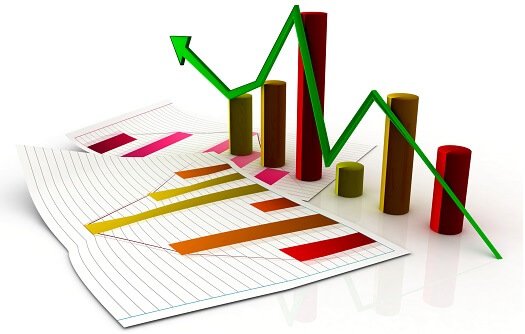
Efforts. Data. Metrics. Efforts. Data. Metrics. Repeat. Without metrics, efforts don’t work. Without results, efforts don’t count. This is true in today’s data-driven world of sales too. If you look at the Sales top down, you will see that things are pretty measurable. As you travel down the funnel, things don’t seem so clear. We talk about increasing the sales pipeline, about white space opportunities, traffic, leads, warm, hot, cold but once we get to those numbers, no one can tell how to prioritize the projects on hand. This is the Sales Enablement Measurement conundrum. Organizations are uncertain about how to measure sales enablement efforts. How do we measure the alignment between marketing and sales? We have tried to resolve your conundrum here to some extent, using both, qualitative and quantitative methods of measurement. These are at best taken as indicators but will help your sales enablement efforts stay on track. 5 ways to track and measure your Sales Enablement efforts. Track the lead-to-deal rate or lead-to-conversion rate: The Sales Enablement team should be more focused on the bottom end of the sales funnel. This means tracking the lead to conversion rate. This is what will indicate the impact of your sales enablement strategies. Although not entirely, because the conversion rate depends on the number and quality of the leads. Besides this, this can be a good measurement index that also helps to identify trends over a period. Ask yourself the question “Will this project help me close more deals?” If the answer is “yes”, put it on priority. The others can be taken up later or delegated. Measure win/loss rates against key competitors: Sales is a race to the finishing line for every lead to be cracked. Your sales team needs your help and support all the time as they face the toughest of competitors. Monitoring your wins and failures and comparing them with your competitors’ wins and losses, will help you identify the gaps and fill that in. It will help you even further to know where you need to put your energy. Your CRM system will help you with this metric. Amplify your content so that it influences a decision to buy: Content is a universal weapon in the sales arsenal; right from the top end of the funnel to the bottom end. Supply your sales team with the right documents and decks but also, leverage the online medium to publish content through visual media. Then monitor it to see which one is more influential as the buyer is in the last stages of his buying decision. Scaling up online with content is good as you can measure the results of what works and what doesn’t. A good CMS and an analytics tool will help you in this task. This will be a perfect time to go for a sales enablement tool. Also, keep a track of and measure your content production – how many pieces of videos, infographics, newsletters, blogs, etc. produced in what month. This will help you measure the time invested and resultant output from these. Do not dismiss attribution reporting: Attribution reporting helps you to see what content helped influence the buyer in the latter stages of his buying journey. This helps in building more content that was successful and cutting down on content that produced weak results. Sit with your sales team: We mean ‘physically’ sit with your sales team regularly. Maybe for some time, every single day. This helps you to know what content they are sharing with customers, what they are saying to leads, how they are doing their demos. By physically being there, you also absorb the underlying vibes, energy and understand a lot that is unsaid or unseen to the naked eye. The team also finds you more accessible and is more inclined to share feedback openly. This helps them voice their needs when it comes to sales enablement efforts. The above 5 are indicators to measure sales enablement efforts. Share your experiences once you start putting these into practice, or in case you have already done so.
Measuring Sales Effectiveness for Social Selling
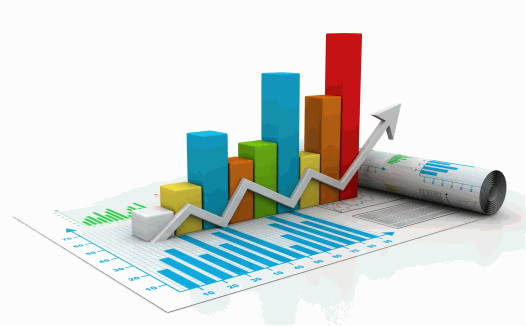
Social Selling is quite becoming the norm for many organizations. While most are quick to adopt newer ways of selling through the new age media like Social Media in the hope of bettering the sales targets, many may not be aware of whether these new techniques are even effective. Many are not aware of how to measure the sales effectiveness of these techniques for their sales force. Social Selling involves a more personal mode of selling, it involves the building of relationships, one-on-one through Social Media. It means measurement takes on a new meaning entirely. It takes into account the fact that sales is not merely about a number of calls and emails sent, meeting scheduled, but about lead farming and nurturing. Here, we give you ways to measure the Sales Effectiveness of your sales force for these sales techniques. These techniques will measure your sales team’s ability to build a quality relationship mapping by tracking these skills and activities. Since most Social Media has both, a qualitative and quantitative angle to them, we need to consider both, as we move through the ways of measurement, below: Let’s begin. Establishing your online professional brand: What is the effort that your salespeople are putting in to build their profiles on Social Media? What are they doing, sharing, discussing there that keeps the prospects engaged with your products and services? Are they writing blogs in the domain, which establish your company as a thought leader? Are their blogs read, followed and commented on? It is found that salespeople who display a willingness to talk about what value their company offers to a prospect, with equal enthusiasm time and again, is an indicator of their ability to connect with prospects better. What are the salespeople publishing about your brand online? Are they well prepared with their elevator pitch as well as their nurturing methods? Do they know what differentiates their product from the competitors? What the salespeople post online and how it is received by their online audience is a good indicator of sales effectiveness in Social Selling. Finding the right people. Building the right network: Social Media Channels have various tools, many of them free for a certain limited number, that help in identifying prospects. Are your salespeople using these tools or if not, doing things manually – making lists of people they would like to be connected with? Are they increasing their sales pipeline? Do they know who the decision-makers are? Do they have a strategy and a calendar plan to connect with these prospects? How networked is your sales team? Salespeople should leverage their first level contacts on their network to seek an introduction to their second or third level contacts; unless they do that, or they personalize their invite while sending out a request to connect, it may be seen as a cold call and may die a premature death. Sales effectiveness can be measured by analyzing the strategy your sales team uses to build a network and a strong pipeline. Insight knowledge and insight mining: As we have already seen in one of our earlier blogs, insights into the domain of the customer is a strong skill set every salesperson needs to possess. In Social Selling, this domain knowledge and insight into what exactly the customer may be looking for is seen through how your salesperson authors content. Is he writing like a thought leader, thinking like one and connecting with prospects through his content? Has he been able to hit the pain points and offer a solution for those? The fastest way to connect with a prospect is to be able to precisely identify his pain point and take the time and effort to provide information to solve it. Another way of measuring effectiveness is to measure the open rates of InMails sent by your salespeople. This is a LinkedIn tool that measures the open rates. It depends on how you craft your sales messages. You have to have a method that is more nurturing than pushy. Who are the people that matter? Who should you connect with? Social selling is not about the number of connections you tote on your profile. It is about the right kind of connections. Are you connecting with the decision-makers? This can be tracked by measuring the accepted requests vis-à-vis the sent requests. Another way of measuring is to find out how many key connections does your salesperson has in each of his Key Accounts. It is important to have multiple good contacts and key contacts into a single Key Account. A merging of your CRM contacts with the building of contacts on Social Media could make all the difference to your customer relationships and your Key Account management relationships. Social Media marketing Tools built into Social Media can pretty much measure Sales Effectiveness, effectively. However, there are going to be missing links in these tool measurements, which with time will be filled. Until then, Social Selling measurement for impact can be used as a complement to more traditional ways of measuring sales effectiveness. Explore our blog on cross-selling and up-selling in which we’ve elaborated how it can be used to grow business in 2021.
Best Sales Enablement Software in 2025
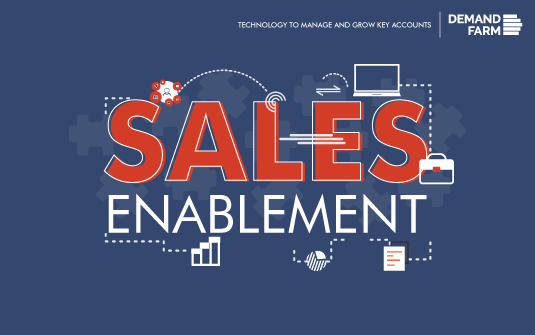
Closing a deal involves more than just having a top-notch sales rep. For your sales rep to be truly effective, they need immediate access to the right information. This is where the right sales enablement tools and ongoing sales training, such as Gong.io, become crucial. These tools, including AI-powered machine learning technology, provide the necessary information and help streamline processes and enhance productivity, leading to greater success for both the sales and customer success teams. With real-time sales coaching and objection handling, AI-powered tools can also assist in identifying areas for improvement and coaching opportunities for customer success, tech support, and other customer experience teams. These tools provide valuable insights and support in real-time, making them essential for increasing close rates and revenue growth and optimizing revenue operations. How do sales enablement tools help improve sales team performance? Sales enablement tools help sales teams by providing resources, content, and training to enhance their sales process. These tools enable better communication, organization, and efficiency, leading to improved productivity, higher conversion rates, and ultimately increased sales performance. What metrics can be tracked using sales enablement tools to measure success? Metrics tracked using sales enablement tools for success include sales conversion rates, sales cycle length, content engagement, lead response time, and sales rep productivity. Monitoring these metrics helps optimize sales processes, improve customer interactions, and drive revenue growth effectively. With the vast array of tools available, it can be daunting to determine which ones best meet your needs. But don’t worry, we’ve done the heavy lifting for you. Now, all you have to do is select the tool that aligns with your organizational goals and objectives. It’s good to have a suite of sales enablement tools that cover various aspects of your operations, from content management to training and analytics to reporting. Such tools ensure your sales team is well-prepared, well-informed, and capable of performing at its best. Here’s all the information you need to choose the right tool for your goals. This selection will empower your team, streamline your processes, and ultimately drive your success. What is a sales enablement software? To close a successful deal, it’s crucial to ensure that every stage of the sales funnel is seamlessly connected. This involves efficient communication of information and insights at various stages of the process. Sales enablement software is designed to achieve just that. These tools offer valuable insights into the entire sales process, allowing you to make adjustments as the sale progresses. With this, you can centralize all sales-related information, providing all stakeholders and the entire sales team with real-time insights into the progress of various aspects of the sale. These tools tag each piece of sales content with details about its target buyer persona, its use case, its position, and other necessary properties, making it an essential part of sales content management and case studies for delivering relevant information and the right content to the right audience in less time. Additionally, Showpad Content’s advanced AI-powered recommendations engine suggests relevant content for sales reps. It helps them find the most effective content for each specific sales situation and minimizes administrative tasks, allowing them to focus on engaging more effectively with buyers and improving their overall sales performance. Sales enablement software, such as Brainshark, facilitates sales by providing video-based coaching, practice, and assessments to certify reps’ readiness. It also provides automated scores and analysis powered by AI, including an AI Voice Generator for creating training content, allowing for better tracking of each sales team member’s progress and readiness. How to choose the best sales enablement software? You wouldn’t want an inefficient sales team do you? So, they need the right tool to do their jobs right. Good sales enablement tools is crucial for aligning with your organization’s goals and objectives. The choice you make is a critical part of your B2B buying process. Here’s a checklist to consider before selecting a tool, including reviewing best practices for sales engagement: Identify Sales Funnel Gaps: Start by pinpointing the areas where your sales funnel is failing. Are there stages where leads frequently drop off, or are certain sales processes taking longer than they should? By clearly identifying these gaps, you can focus on finding software that addresses these specific pain points, ensuring the tool you choose will effectively enhance your sales process. Prioritize User-Friendliness: Any new tool requires training and onboarding. Choose software with a user-friendly interface and a short adoption period. Overly complex tools with limited customization options can frustrate your team and prolong the onboarding process. Instead, opt for intuitive solutions that offer a straightforward learning curve, enabling your sales reps to quickly become proficient and productive. Additionally, check for available training resources and customer support to facilitate a smoother transition. Focus on Relevant Data and Analytics: Too many metrics can be overwhelming. Begin by drafting your sales enablement strategy to identify the key objectives and metrics. Then, select a tool that offers reporting and analytics aligned with these needs. Look for features such as customizable dashboards, real-time data tracking, and insights that directly relate to your sales goals. The right tool should help you make data-driven decisions without drowning you in unnecessary information. Ensure Scalability for Growth: As your company grows, your sales processes will evolve. Choose a tool that can scale with your company’s growth, ensuring it remains effective as your business expands. Assess whether the software can handle an increasing volume of data, users, and sales activities without compromising performance. Also, consider whether it offers advanced features that can support your future needs, such as AI-driven insights, automation capabilities, and enhanced customization. Seamless Integration with Existing Tech Stack: Seamless integration is essential. A good sales enablement tool should integrate smoothly with your existing tech stack, eliminating the need for manual data import or export. Verify compatibility with your CRM, email marketing platforms, and other essential software. Integration should be straightforward, minimizing disruptions and ensuring a unified workflow across all your tools. Additionally, check for API availability and the ability
You have got Leads. Now make them 4X More Effective.

There are 4 simple yet highly effective strategies for improving sales effectiveness and improving your chances of converting a lead to a deal. Speed: Strike when the iron is hot Shocking truth: In a survey done across 350 companies, 38% took more than a full day to respond. In the fast-paced world today, the speed of response is of the essence; this is succinctly explained through the adage ‘Strike when the iron is hot.’ The lead is open to being nurtured and led further in the funnel if your response time is quicker. The more you let the dust settle down on the lead, the more difficult it gets to convert him. Even the difference between 5 minutes and 30 minutes could mean death in the form of a dead lead. So make sure you set and communicate your response time and follow it through. Persevere: Never say die Shocking truth: 53% made no more than two attempts at contact and gave up after that. There are reams written about how if you hang in there and keep trying, success can be all yours. All of it is every bit true. A sale or a deal is lost not because it was dead, but because the salesperson did not try enough times or gave up far too soon, especially when he was far too close to closing it. The 2-word mantra for every sales person to convert a lead should be persisted and persevere. Even if you have to try for the 8th time or beyond, do so, as this will get you a higher response rate Embrace personalizing Shocking truth: 30% had no element of personalization in their emails. Messages, emails, professional calls tend to impact the personal touch, often making the sales call impersonal and cold. Personalizing the message, call or email makes all the difference in the world as it immediately puts the recipient in an open, receiving mode. Well begun is half done, as they say. The more elements of personalization you add in your communication, the more likely the recipient will click through and open and read the email. The content of the email should also be carefully tailored to suit the recipient as much as possible to garner more responses. It has been proven that personalizing messages make it 137 percent more likely that the recipient will open the email and respond. Perform or perish Shocking Truth: 58% were likely to miss the email at least 10 percent of the time. Checking how the email or your communication works and correcting course to make it work better, is very important. The effort deserves its dues, but so do the results. Performance needs to be the objective and the checkpoints of all your communication. Just as it is true in every aspect of business, it is true here – perform or perish! The truth, as we clearly can see above is that companies are nowhere close to the ideal strategies of follow-up; but they need to get there soon. Else the chasm between a lead and a deal will keep widening. “Act now!” should be the anthem and the action.
When Should you Go for Sales Enablement Tools?

As per industry figures, only a third of the sales team meet their quota, and just a few exceed it. So how does an organization get its sales team to deliver a great performance? Simple answer really- get in new tools to help your sales team. Empirical evidence shows that the right sales enablement technology implemented correctly, at the right time, makes the difference between lead, deal, and a loss. Organizations need sales enablement tools for a superlative sales performance. And the perfect time to do it is when you see any of the following happenings in your organization. Onboarding time for new salespersons exceeds the average Thousands of dollars are spent and hundreds of man-hours invested in getting the new salespersons get up to speed in their onboarding. And despite this, the performance is average or even poor. The right sales enablement tool can help cut this time by 30 to 40 % while ensuring the right content and knowledge of products and services are at hand for the new sales team to move ahead with confidence, sound knowledge and perform well. Productivity is suffering due to less time spent on core selling Sales productivity is a challenge, has been one, for a long time for many B2B companies When sales productivity dips, revenue is heavily impacted. The primary cause of this decline is attributed to the sales team performing more functions other than core selling. Usually, these tasks are routine, non-core and repetitive. Perfect candidates for automation. A good example would be a CRM that helps automate major such tasks and increases productivity by at least 30%. A blanket approach to sales The buyer is getting smarter and more demanding. If sales are using a blanket approach to selling, then it is the seller’s loss, for certain. To stem the loss and to transform the selling process vis-à-vis the changing buyer scenario, it is critical to get into automation. These tools can help tailor the offering or solution based on buyer persona, preferences while also tailoring the content, messaging and interaction timing between the salesperson and buyer. Sales strategies have to take this into account to ensure that the sales team meets the buyer one-on-one, thus improving effectiveness. Taking the sales further in the journey is a problem There is a cost attached to not taking the sale further in its journey, in time and in the right manner. Often, salespersons are not aware of how to do it; they get stuck after a point, or maybe they are not so sure about the next step in certain situations. Sales enablement tools like relationship mapping come to the rescue once again by helping the salespersons with the right help through persona-based selling tips, just-in-time coaching, and effective collaterals. These are also instantly accessible to any of the sales team members. Sitting on the fence ends up in more losses than anything else It is incredible to note that anything up to 50% of the sales forecasts ends up as a no-decision. Something that is neither here nor there and as time lapses, the decision goes the wrong end of the funnel and is declared as a lost deal. It is interesting to see that this happens because, in many cases, it is easier to do nothing. “Why challenge the status quo?” is always a better proposition. With sales enablement tools, it is easier to overcome the status quo. This happens by offering value. The more the salesperson gets to the depth of the prospect and understands his business, addresses his pain points, the more the engagement between the salesperson and the buyer. This often results in a deal. Sales enablement tools help salespersons by guiding them on how to build a case, helps them to engage the prospects with value-added content and help them to advance the deal. The right content at the right time is not available to the sales team A survey shows that 90 percent of content is not used. Where we know that impactful content influences 95 percent of B2B sales, sales teams say they never have the right content on hand when they want it. As a result, sales teams waste valuable time away from core selling and in finding the right content or creating it themselves. With sales enablement tools, real-time data shows what content a sales rep may need at what time for a maximum turnaround and helps put up that content for the salesperson to use. Right content, at the right time for the right sales person, is the best thing that can happen to sales effectiveness. Limited insights into what works and what doesn’t, hampers the sale If data is there, then data analytics are not there; this is true in many cases. This hampers the sale as has been proven time and again. Insights help in closing a deal because insights help the salesperson in knowing more about his prospect. Sales enablement tools help in data mining and with predictive analysis helps the sales persons to glean insights from data captured. This helps the sales team to improve sales performance, through improved productivity, increased effectiveness and thus improves revenues. The above 7 signs are clear indications of when an organization should start getting in automation and look at sales enablement seriously. If you have spotted any of the above signs, we recommend you start getting into action immediately and get in Sales Enablement.
Operation Scaling Up – How Sales Operations is the Defining Factor at this Stage?
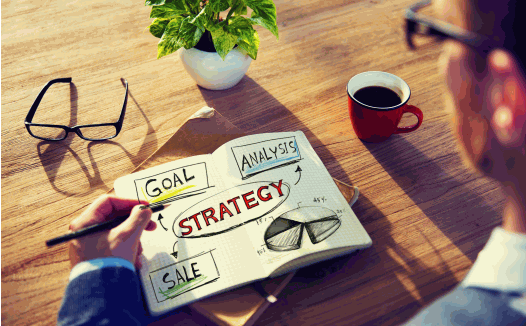
The most friction inducing factor is when companies start growing up at an exponential rate and aim at a skyrocketing of revenue. Typically, companies at this stage end up hiring more and more star sales people; which is good in its place, but the most important hire of the organization’s growth season could be a Sales Operations Star. Here’s why: You are hiring new sales people by the dozen; you need someone to train them and make them productive and at a fast clip. While most of us think that sales directors and the top sales people are the ones who should be doing this, we are sadly mistaken. They are the last ones to be interested in helping HR write Job Descriptions, screening candidates, interviewing, recruiting and once on board, training, coaching, mentoring them. Even if they do, they may take their own sweet time as their primary focus is sales. Time lost is sales lost. The need of the hour is a Sales Operations Star. A great sales leader isn’t always a great operations guy. There may be exceptions, but they are just that. Exceptions. Most sales leaders and star sales people practically hate the operations job of putting together information in spreadsheets, analyzing it, studying metrics and putting together an action plan to hit where it is needed. They would rather work on the actual field sales. They are action guys and not operations guys. Sales and leadership alignment is a back room job – not the battlefield goal. Alignment between sales and marketing may be a good thing to think of and say, but practicing it is often difficult. The sales force is keen to roll up their sleeves and convert the next hot lead they can get their hands on; they are not too fond of pricing, packaging or other high-level strategies and would rather leave it to a representative who is specially cut out for the job – he is better known as the Sales Operations Specialist. Generating reports is not the sales person’s cup of tea. Generating reports is the bane of a sales team. Somewhat like a necessary evil; sales persons may often avoid working on reports like the plague. This job is better left to the sales operations person who will, in all probability, lovingly spend lots of time over generating reports from the CRM insights on a daily, weekly, monthly basis in whatever format they are required for whoever at the organizational level. Choosing the right technology tools is the mandate of the Sales Operations Chief along with the Sales Leadership. Technology planning, implementation, and the preview is the job of a sales operations person along with the Sales Leadership’s support. Technology and choosing the right tool is crucial to every organization’s sales department as it enters the growth phase. Sales operations leaders allow their sales force to focus on sales and handle the operations and sales administrative part themselves. Sales operations without a doubt are necessary to grow sales and revenues.
Tightening the Lead-to-Deal Cycle with Sales Enablement
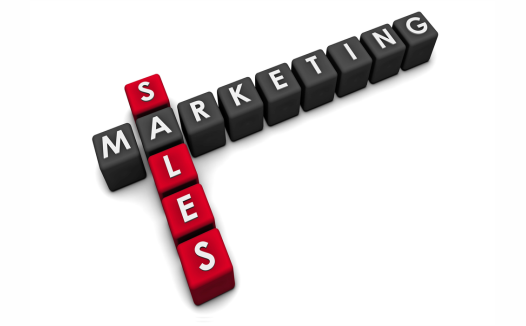
The first contact of the buyer with company and product information today is the Internet and, more precisely, the handheld device, which is an all-too-familiar sight anywhere in the world, even in its remotest corner. Gone are the days when the company sales representative would knock on the doors of the buyers and share information about his product, hoping to make a sale, eventually. The internet has taken over the lives of the buyers completely. With the kind of overwhelming information that is available on the internet in a single swipe, there is no wonder that the buyer knows a lot about your product, company, competitor products, the category and almost everything there is to know, from the internet. You may, therefore, ask – “Of what use is our sales representative?” Good question. Your sales representative needs to be well equipped with advanced information that will pre-empt all the prospects’ queries, doubts, concerns at that stage of the buying cycle. A sales representative needs to remember that buyer queries at this stage when he has gobbled up all the information from the internet, tends to be highly advanced, specific and sophisticated. How does one handle this? The answer is two powerful words- Sales Enablement. Brainshark defines Sales Enablement as a “Systematic approach to increasing sales productivity, by supporting reps with the content, training, and analytics they need to have more successful sales conversations.” Sales Enablement demystified For all the glamor or mystery that shrouds sales enablement, it is a simple concept that encompasses all those activities that optimize the effectiveness of the sales effort. Sales enablement is known to increase sales productivity with sales enablement tools. It covers many aspects such as client-facing content; education and analysis; coaching, training, buyer’s insight, content creation, guidelines for using sales assets, sales automation, technology for finding and accessing the right content, and fast and easy access to the right content and knowledge. This helps the salespeople in having all the tools at their beck and call so as to focus on providing value during client discussions. It has been shown in a survey of 400 B2B Sales and Marketing professionals that 57 % ranked their sales efforts and effective or very effective, in organizations that had sales enablement. In another survey, one could see a clear 50% increase in sales team goal attainment. It is all very well to see and say that sales enablement is a must for sales effectiveness and sales acceleration. However, implementing it the right way needs a certain amount of discipline on the organization’s front. This can be applied in three ways: Sales and Marketing working as a Team Too often we see sales and marketing passing the buck on each other. Sales say, marketing does not generate enough leads or generates poor leads, while marketing says, sales wastes the leads given to them. If instead, the two join hands and communicate in unison with the customer, the effort will be fruitful. Marketing can glean and share insights generated through nurture campaigns and digital listening with sales. This way, sales can work on intuitive insights thus leading to better results and conversions with customers. Integrating systems to ensure the end-to-end lead flow With all the talk going on, about lead generation, nurturing and conversion, one cannot afford to ignore the integration of systems so as to leverage the lead to deal process. The smooth flow of leads in the funnel from marketing to sales is important. Marketing should pass on all the insights to sales that are generated during the nurturing process; they need to create a clear customer profile for sales; so that when sales walk in, they pass on the right message, catch the right white space opportunity and move in for closing the deal. Today, this smooth flowing of leads, lead profiling, and customer understanding is critical because sales come in later in the buying cycle than used to happen earlier. The marketing and sales alignment helps the sales organization follow up with the right communication and cut down the duration of the buying cycle. CXO backing Talking about sales enablement and sales transformation is easy, but implementation, not as much. Like any other new tool, technology, process or practice that needs to be incorporated into an organization, even this one needs top-level backing. The support also has to be active; with clear, planned communication, benefits, and schedules from the top, reinforcing the change. Sales and marketing leadership is the best place to begin this shift. A good part of sales enablement is good, impactful content. If sales have to try hard to access it, they lose time. If they do not understand what content the buyer needs in a face to face discussion, they lose the buyer. Sales enablement does not come alone. To go with it, it needs good content and great integration between sales and marketing, in spirit, function, and systems. This will help organizations in upping their customer experience, making a positive difference in conversion rates and improving sales effectiveness and productivity. Explore the complete guide to Cross-selling and Up-selling to identify unexplored opportunities for your business as well as your clients’ business and grow better in 2021.
Behaviours that Enhance Sales Effectiveness
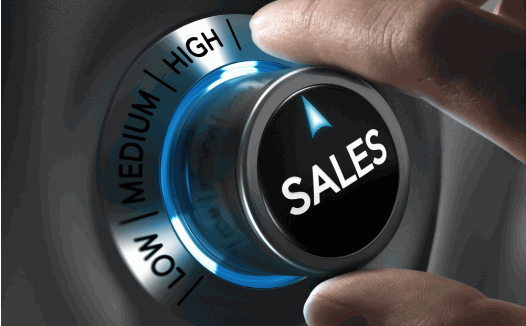
In one of our earlier blogs, we have argued a case where tech alone cannot help in selling and selling well. Selling is an art and a science and weaves together psychology, business learnings, and personal skills. If we are to base our five on science, there has been enough research in the last 5 decades or so, to arrive at some conclusive findings that help in hugely enhancing selling effectiveness. We are primarily going to talk about some specific behaviors, which are easy to follow and practice. You will see a difference and a hike in your sales effectiveness that will prove how effective these behaviors are in selling. 1. Label the prospects: Labeling the prospect is very simple. Here, the salesperson assigns a certain behavior to a prospect and by doing so, sets an expectation of similar behavior from the prospect. In this case, it is not so important what the prospect was thinking earlier. Research has proven that when you label your prospect, he is more likely to behave the way you want him to. For example – If a prospect is being elusive while answering some important questions to the salesperson, and the salesperson labels him by saying – “You are very open you’re your answers and thoughts, thank you!” The chances that the prospect stops being elusive and starts being more open are much more. In fact, going by research, he will be more open. Labeling the prospect is a wonderful thing that can be used in enhancing selling effectiveness. 2. Rebel. React: It is found and proven that prospects rebel when salespeople create a sense of urgency for them to respond. When the above was analyzed, we observed that prospects feel threatened that their personal freedom to decide is being restricted and threatened and the salesperson is taking over their freedom to choose and decide. These create a reactive behavior in a prospect and he rebels without even thinking. This kind of behavior is extremely human and the pushier one gets, the more the other person rebels. Instead, if the salesperson ends by saying to the prospect – “This product will help you improve your quality 3x. But of course, the decision is yours.” There are greater chances the prospect falls into a responsive mood and is more positively inclined to you, rather than saying – “You won’t get a better product than this and since we are running out of our special offer, you must make a decision fast.” The latter statement will put off the prospect for certain. Salespeople should say the right things and ensure they never end up pressuring the prospect. It calls for tremendous patience, but it is a great skill to master. Collaborating with top UI UX companies can also enhance this process, as a well-designed user experience can make prospects feel more comfortable and in control during their decision-making journey. 3. Turn value statements into value questions: Typically, prospects never understand your value statement easily. They take their time. But one easy and scientifically proven way to make them understand your value statement easily would be to convert the value statements into value questions. These questions help amplify the persuasiveness of sales messages because they guide prospects in mentally digesting the value you offer and give them a feeling that it is they, who are going to take the decision. It is simple to create a value question – you need to add a questioning phrase, a short one, to your value statement. Example – “This software would reduce your HR operational costs annually by $200,000, wouldn’t it?” You could even keep a set of value questions ready, based on your key value statements. If all the above sounds simple, it is. But it is proven to produce amazing results. We urge you to try these three selling behaviors to overcome sales effectiveness bottlenecks. Do share with us, your views and experiences. And get ready for a superlative increase in sales enablement, effectiveness and performance. Also, do read our other sales effectiveness blogs.


